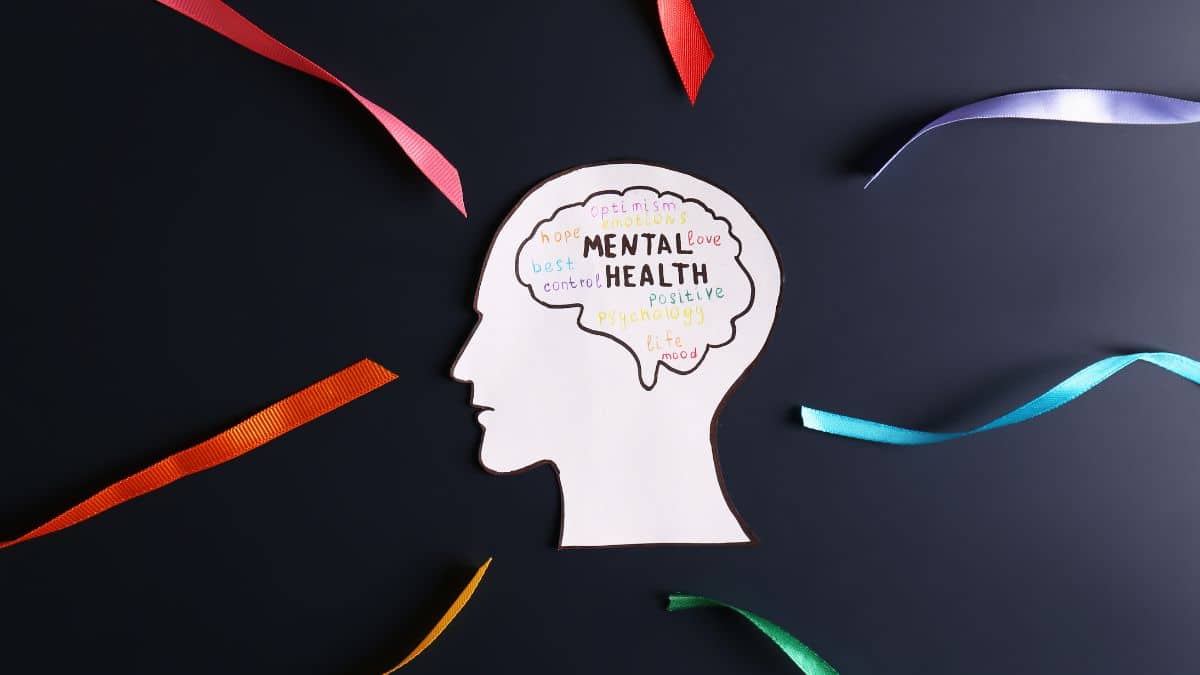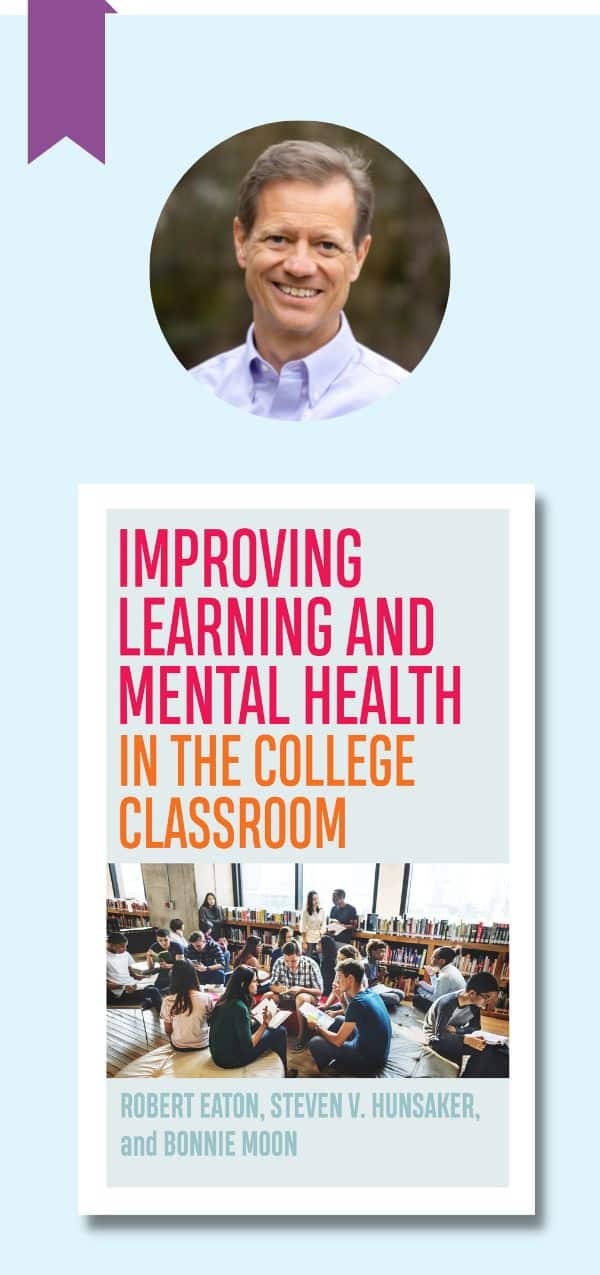‘Improving Learning and Mental Health in the College Classroom’: An Interview with Robert Eaton

Robert Eaton

James M. Lang

West Virginia University Press, the publisher of Improving Learning and Mental Health in the College Classroom, believes this important book will contribute to the conversations we are all having right now about student mental health. The authors bring three different backgrounds to the project, but they speak with a single voice about how faculty can support student mental health in course design, classroom practice, and interactions with students. In this month’s Recommended Reads interview, I spoke with one of the book’s authors, Rob Eaton, about the challenge of tackling such a complicated issue. When so many of our students are suffering with mental health problems, we can face decision paralysis: Where do I start? As Rob points out in our interview, we can all start somewhere. Even small tweaks to our course design or interactions with our students can make a positive difference to the well-being of a struggling student. In the book you will find plenty of small ways to support student mental health on campus.
James M. Lang, Ph.D.

Excerpt from the book
Given the magnitude of what’s at stake, it’s not surprising that the impact of mental health on college students has been the subject of a growing body of research. However, relatively little of this research derives from the social sciences, let alone focuses on the role teachers can play in helping students better cope with mental health challenges. In a fascinating bibliometric analysis of tens of thousands of articles written about mental health and college students, professor, teaching, classrooms, mentoring, and coursework are not among the terms that appeared twenty-five times or more in this vast body of literature. In other words, teachers—arguably the most important asset an institution has in helping students with mental health challenges—have been largely overlooked.
In the rich literature on student success, it’s quite clear that interactions between students and faculty members affect student satisfaction more than any other variable. Teachers have a chance to listen to students, connect with them, and lift them in a way that no other university employees can. Three engineering professors and deans argue in Inside Higher Ed that as important as other people on campus are, “the classroom is the one place where every student shows up, and it might well be the place where we can turn the tide of mental health on campus.”
Interestingly, students are more focused on the impact of their professors on their mental health than are most scholars researching in this area. Recognizing that little research had been done on “measures that universities could take to reduce environmental stressors,” Chi Baik and her colleagues decided to ask students themselves. To be exact, they asked 2,776 students this question: “What can be done to improve student well-being?” More than any other topic, most answers dealt with “academic teachers and teaching practice, indicating that academic teachers can play an important role—perhaps more important than previously recognized—in supporting student wellbeing.” The students’ responses made clear that college teachers “have the potential to enhance and support student mental wellbeing (and conversely, to have a negative e?ect on wellbeing).” Baik and her colleagues don’t call for teachers “to become mental health experts, either in diagnosing mental health di?culties, or in counselling students experiencing psychological distress.” Instead, they argue that sound teaching practices “would reduce the stressors that students experience in the learning environment.”
To be clear, our aim is neither to help professors become pseudocounselors nor to ask overstretched faculty to invest much more of their limited time. While we will discuss some things faculty can do as noncounselors in the course of our usual mentoring, our focus is primarily on changing the way we do some things we are already doing—working smarter, not harder. We recognize that most faculty members—especially adjunct faculty members—are stretched thin already. Our hope is that rather than adding to already full plates, the ideas in this book will make life for teachers, too, a bit more manageable. As we make some minor adjustments in how we interact with students and design our courses, we can help more of them succeed, eliminating a few student-relations headaches in the process. In essence, we believe that wisely practicing some preventive pedagogical care up front can save us some time and energy in dealing with more acute academic cases later in the semester.
Our advice certainly won’t help students completely conquer their depression or anxiety—that’s not our aim. But by focusing on how we can help rather than hinder students, we hope to support them in moving in a positive direction on the mental wellness continuum. As Cavanagh argues, “Given how common anxiety is in higher education, and its host of negative effects on achievement and performance, strategizing it out of our classes could have a powerful effect on student learning outcomes.” As teachers, almost all of us do at least some things that unintentionally and unnecessarily create stress or discouragement for our students. And those practices interfere with learning more than most of us realize.
On the other hand, among the myriad of teaching practices proven to benefit all students, some are especially beneficial to students with mental health challenges. We can and should get better at identifying both kinds of teaching practices—those that help and those that hinder. Aspen Institute president and former college president, Dan Porterfield says regarding college and mental health, we have to figure out “what is enabling great learning and what is blocking great learning.”
As teachers weigh the relative costs and benefits of each practice with alternatives chosen from among proven teaching strategies, most of the time we’ll discover that not only can we remove some unnecessary pain from our students with mental health challenges but we can also improve learning for all our students. In Cheating Lessons, James Lang writes that “the best practices for reducing cheating in our courses coincided with the best practices for increasing learning.” Similarly, the best practices for reducing unnecessary stress and discouragement are usually the best practices for increasing learning. In other words, we can simultaneously create a much better experience for our students with mental health challenges and help all our students learn more.
For discussion
Rob Eaton points out that untrained college faculty shouldn’t be doing mental health counseling, but we can all undertake some basic activities that can lead to better outcomes for our students. He gives the example of asking students who visit in office hours how are they doing outside of class. Can you offer any examples of small ways in which we can support student mental health either through our courses or in office hour visits?


